Kia Niro vs Skoda Superb Combi – Which car suits you better?
Everyday use, family trips or long-distance drives – here’s where the differences show.
Discover whether Kia Niro or Skoda Superb Combi fits your lifestyle better.
Costs and Efficiency: Price and efficiency are key factors when choosing a car – and this is often where the real differences emerge.
Kia Niro has a noticeable advantage in terms of price – it starts at 29100 £, while the Skoda Superb Combi costs 35200 £. That’s a price difference of around 6094 £.
Fuel consumption also shows a difference: Skoda Superb Combi manages with 0.40 L and is therefore decisively more efficient than the Kia Niro with 2.40 L. The difference is about 2 L per 100 km.
As for range, the Skoda Superb Combi performs significantly better – achieving up to 134 km, about 72 km more than the Kia Niro.
Engine and Performance: Power, torque and acceleration say a lot about how a car feels on the road. This is where you see which model delivers more driving dynamics.
When it comes to engine power, the Skoda Superb Combi has a distinct edge – offering 265 HP compared to 180 HP. That’s roughly 85 HP more horsepower.
In acceleration from 0 to 100 km/h, the Skoda Superb Combi is significantly quicker – completing the sprint in 5.70 s, while the Kia Niro takes 9.90 s. That’s about 4.20 s faster.
In terms of top speed, the Skoda Superb Combi performs noticeable better – reaching 250 km/h, while the Kia Niro tops out at 185 km/h. The difference is around 65 km/h.
There’s also a difference in torque: Skoda Superb Combi pulls evident stronger with 400 Nm compared to 265 Nm. That’s about 135 Nm difference.
Space and Everyday Use: Cabin size, boot volume and payload all play a role in everyday practicality. Here, comfort and flexibility make the difference.
Both vehicles offer seating for 5 people.
In curb weight, Kia Niro is barely noticeable lighter – 1474 kg compared to 1575 kg. The difference is around 101 kg.
In terms of boot space, the Skoda Superb Combi offers clearly perceptible more room – 690 L compared to 451 L. That’s a difference of about 239 L.
In maximum load capacity, the Skoda Superb Combi performs noticeable better – up to 1920 L, which is about 475 L more than the Kia Niro.
When it comes to payload, Skoda Superb Combi clearly perceptible takes the win – 584 kg compared to 466 kg. That’s a difference of about 118 kg.
Who wins the race?
The Skoda Superb Combi proves to be leaves the rival little chance and therefore becomes our DriveDuel Champion!
Skoda Superb Combi is the better all-rounder in this comparison.

Skoda Superb Combi
Kia Niro
The Kia Niro presents itself as a versatile and eco-friendly SUV, blending a stylish design with advanced hybrid technology. Its spacious interior offers comfort and practicality, making it ideal for both city driving and longer journeys. With a focus on efficiency and sustainability, the Niro is a compelling choice for environmentally conscious drivers.
details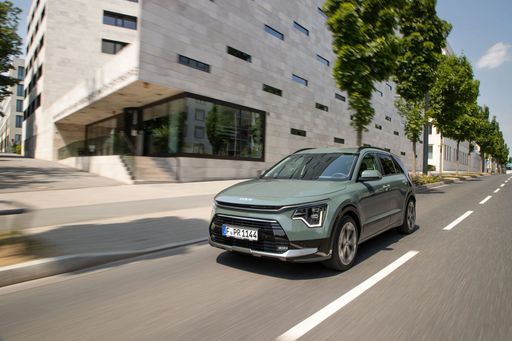 @ press.kia.com
@ press.kia.com
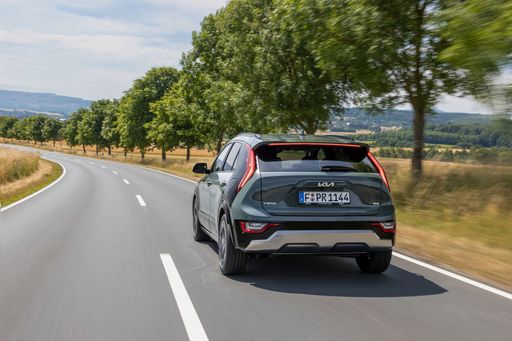 @ press.kia.com
@ press.kia.com
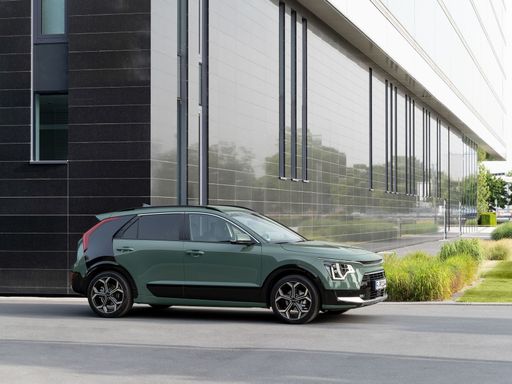 @ press.kia.com
@ press.kia.com
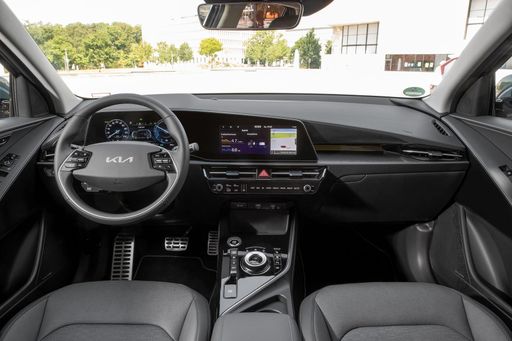 @ press.kia.com
@ press.kia.com
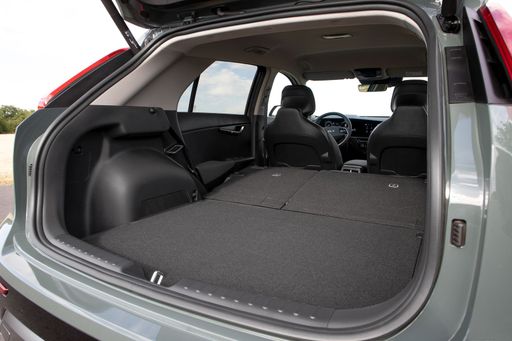 @ press.kia.com
@ press.kia.com
Skoda Superb Combi
The Škoda Superb Combi combines practicality and elegance, making it a popular choice for families and professionals alike. Its spacious interior offers exceptional comfort and ample storage, suitable for long journeys and everyday errands. Additionally, the refined design and advanced technology features ensure a sophisticated driving experience.
details @ Skoda Presse Deutschland
@ Skoda Presse Deutschland
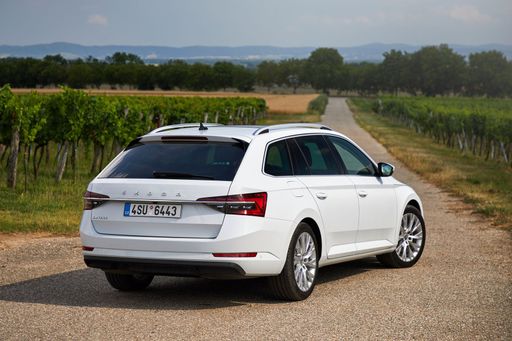 @ Skoda Presse Deutschland
@ Skoda Presse Deutschland

|

|
|
|
|
Costs and Consumption |
|
|---|---|
|
Price
29100 - 38600 £
|
Price
35200 - 51000 £
|
|
Consumption L/100km
2.4 - 4.9 L
|
Consumption L/100km
0.4 - 7.8 L
|
|
Consumption kWh/100km
-
|
Consumption kWh/100km
-
|
|
Electric Range
57 - 62 km
|
Electric Range
124 - 134 km
|
|
Battery Capacity
1.3 - 11.1 kWh
|
Battery Capacity
19.70 kWh
|
|
co2
53 - 111 g/km
|
co2
8 - 178 g/km
|
|
Fuel tank capacity
37 - 42 L
|
Fuel tank capacity
45 - 66 L
|
Dimensions and Body |
|
|---|---|
|
Body Type
SUV
|
Body Type
Estate
|
|
Seats
5
|
Seats
5
|
|
Doors
5
|
Doors
5
|
|
Curb weight
1474 - 1594 kg
|
Curb weight
1575 - 1853 kg
|
|
Trunk capacity
348 - 451 L
|
Trunk capacity
510 - 690 L
|
|
Length
4420 mm
|
Length
4902 mm
|
|
Width
1825 mm
|
Width
1849 mm
|
|
Height
1545 mm
|
Height
1482 mm
|
|
Max trunk capacity
1342 - 1445 L
|
Max trunk capacity
1770 - 1920 L
|
|
Payload
466 kg
|
Payload
497 - 584 kg
|
Engine and Performance |
|
|---|---|
|
Engine Type
Full Hybrid, Plugin Hybrid
|
Engine Type
Plugin Hybrid, Petrol, Petrol MHEV, Diesel
|
|
Transmission
Automatic
|
Transmission
Automatic
|
|
Transmission Detail
Dual-Clutch Automatic
|
Transmission Detail
Dual-Clutch Automatic
|
|
Drive Type
Front-Wheel Drive
|
Drive Type
Front-Wheel Drive, All-Wheel Drive
|
|
Power HP
138 - 180 HP
|
Power HP
150 - 265 HP
|
|
Acceleration 0-100km/h
9.9 - 11.4 s
|
Acceleration 0-100km/h
5.7 - 9.3 s
|
|
Max Speed
170 - 185 km/h
|
Max Speed
220 - 250 km/h
|
|
Torque
265 Nm
|
Torque
250 - 400 Nm
|
|
Number of Cylinders
4
|
Number of Cylinders
4
|
|
Power kW
102 - 132 kW
|
Power kW
110 - 195 kW
|
|
Engine capacity
1580 cm3
|
Engine capacity
1498 - 1984 cm3
|
General |
|
|---|---|
|
Model Year
2025
|
Model Year
2024 - 2025
|
|
CO2 Efficiency Class
C, B
|
CO2 Efficiency Class
B, E, F, D, G
|
|
Brand
Kia
|
Brand
Skoda
|
Is the Kia Niro offered with different drivetrains?
The Kia Niro is available as Front-Wheel Drive.
The prices and data displayed are estimates based on German list prices and may vary by country. This information is not legally binding.
